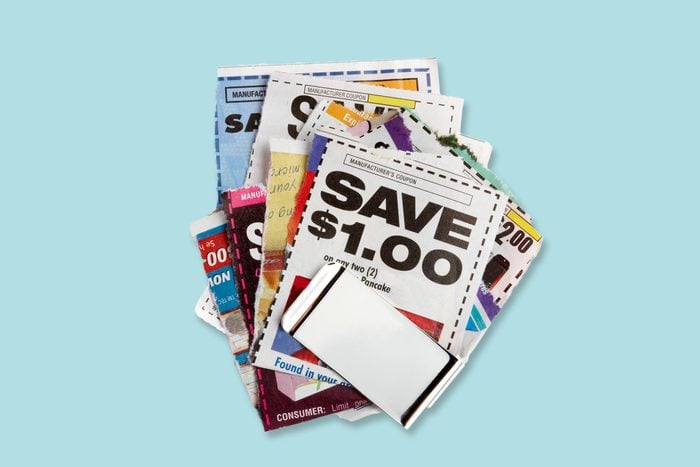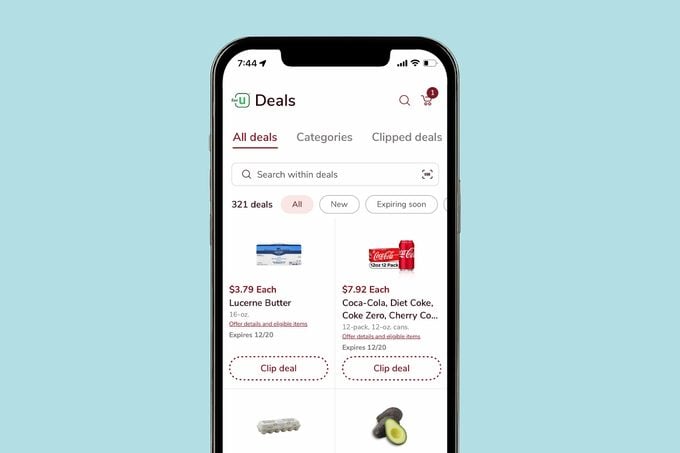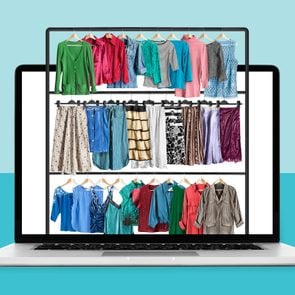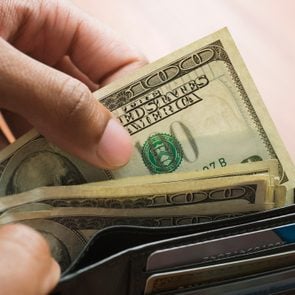How to Coupon: A Beginner’s Guide to Couponing
Updated: Feb. 09, 2023

These expert-approved tips for how to coupon will turn your next shopping trip into a savings extravaganza
It’s time to ditch your preconceived notions about couponing. Thanks to skyrocketing inflation and grocery shortages, we’re all looking for new ways to stretch our grocery budgets. Whether you want to learn how to save money on groceries, create a budget grocery list or find out how to save money overall, coupons are a simple solution. Once you learn how to coupon like a pro, you can reap major savings.
This ain’t your mother’s couponing, though. It’s been updated for the digital age, and knowing how to coupon is an ever-evolving process. Sure, you can still clip coupons from a printed publication, but you can also be a stealthy saver by loading coupons onto a customer-rewards card linked to your favorite stores. And that’s just one way to get massive savings with very minimal work.
Interested in how to start couponing? We asked two couponing experts who save thousands each year for their tips on how to get coupons and use them for the biggest savings. This intel does not disappoint! So, forget the phrase “crazy coupon lady.” If you’re a crafty couponer, you can score huge savings—and keep more of your hard-earned money in the bank, says Mary Potter Kenyon, author of Coupon Crazy: The Science, the Savings & the Stories Behind America’s Extreme Obsession.
Get Reader’s Digest’s Read Up newsletter for more money tips, humor, cleaning, travel, tech and fun facts all week long.
How to coupon
The process can be overwhelming, so we asked our experts to start with couponing for beginners. There are two main types of coupons, says Becky Beach, a self-proclaimed couponing enthusiast and blogger at MomBeach.com, who saves around $3,000 each year with her couponing techniques.
- Store coupons. These are created by the store to increase shopping, and they work only at that chain of stores. For example, Kroger coupons are usually honored only at Kroger stores, including Ralph’s, Smith’s, City Market and Pick ‘n Save. (The name varies based on where you live, but they’re all owned by the same company.)
- Manufacturer coupons. These are made by individual brands to encourage shoppers to buy a specific product or brand and are usually honored at most stores. For example, Proctor & Gamble often sends out coupons for Crest toothpaste, which it manufactures. You can redeem the coupons at Target, Walmart or another store.
You’ll find store and manufacturer coupons in both paper and digital forms. You can often combine them for the best savings, says Beach. The result: You can stick to your budget and avoid dipping into your savings or sinking fund.
Paper coupons
Sometimes the original idea is still the best, and when it comes to couponing, it pays to go old school with paper coupons, says Beach. But first, you have to know where to find them!
Check the following locations for paper coupons you can clip and save.
- Store circulars and mailers. These are usually mailed out weekly to customers in a geographical area, though you can usually pick them up at the front of many stores.
- Register coupons. Some stores print out individual paper coupons with your receipt to encourage you to return.
- Receipt coupons. Check the bottom and back of your printed receipt for coupons, points and other discounts. If you’ve ever come across those comically long CVS receipts, you’ve encountered this kind of coupon.
- Store aisles. You’ll find some manufacturer coupons attached to a display with the product or to the product packaging itself.
- ValPak and other mailers. Manufacturer coupons often come in a bundle of ads (think ValPak). Sometimes other businesses, like realtors, will send out coupons attached to their mailers.
- Newspapers. If you still get a print newspaper (or have a neighbor who does and is willing to share), you can find coupons to cut out. The Sunday paper has the most.
How to organize paper coupons
Half the battle of couponing is remembering to take them to the store and use them! Couponing gurus often have giant binders with tabs or computer spreadsheets, but most people don’t need something that elaborate. It’s more important to come up with a system that works for you and your lifestyle, says Kenyon.
Not sure where to start? Consider these ideas:
- Separate manufacturer coupons by the area of the store or the type of item. For instance, you might store all cereal coupons or pet supply coupons together.
- Keep each bundle of store coupons together. In other words, you’ll keep Stop & Shop coupons with other Stop & Shop coupons and Target coupons with other Target coupons.
- If you have a store and a manufacturer coupon that you can use together, paper clip or fold them together.
- Keep your coupons in your purse so they’re always with you when you need them.
- Put coupons in the same pocket as the credit card you use to pay. You can even wrap the coupon around the credit card.
- Carry a separate, coupon-specific envelope in your purse. With it, you won’t have to dig to find your paper coupons. If you have a lot of coupons, you can buy fashion-forward pouches specifically for coupon organization, or go with a basic wallet-size accordion folder.
- Once a week or month, go through your coupons and weed out any that are expired.
Digital coupons

Many stores and brands are moving toward digital coupons. They’re easier to produce, cheaper to send out and simpler to use. Whether you’re trying to eat healthier on a budget, outfit your brood without going broke or practice good skin care without breaking the bank, digital coupons can help you keep more money in the bank.
Here’s how to find digital coupons.
- Store apps. Many retail chains have their own apps, which include both store and manufacturer coupons. “Clip” them by checking a box.
- Brand apps. Some brands offer loyalty apps that include coupons, rewards and rebates when you buy their products.
- Coupon apps. Apps like RetailMeNot and Honey are a jackpot for savings. Flag the deals you want and then show a barcode or a QR code on your phone at the register (or, if your app allows it, print the coupons and hand them to the cashier). You may even find budget apps that cover a range of brands centered on a specific type of product. GoodRx, for example, focuses on medication coupons, which you can use at many different pharmacies to save on health care.
- Savings websites. Places like Slick Deals round up coupons from other apps and sites so you can search for them in one place. You can also trade coupons through the site.
- Browser extensions. Install Ibotta, Rakuten or another couponing extension on your web browser, and they’ll automatically search for coupons as you shop various sites. They may also give special rewards, like cash back, for using them regularly.
How to save digital coupons
Each app has a method for saving coupons to your account, whether that’s a member number you’ll use for store rewards or an account set up specifically for that app. Here are some tips to remember when using couponing apps:
- Read the instructions. Digital coupons vary from store to store. Some ask that you show a barcode during checkout. Others automatically apply the discounts to your store membership. Still others require that you type in a code or scan a QR code at the display where the item is sold.
- Before you head out on a shopping trip, set a phone reminder to check that you’ve used your coupons.
If you’re on an app-downloading spree, you may want to look beyond budgeting apps. Buy now, pay later apps can make spending on bigger purchases more manageable.
Tips for couponing
Regardless of whether you collect digital coupons or go with old-school paper, you can get the most bang for your buck by following the pros’ tips below. They won’t just tell you how to coupon—they’ll show you how to stretch each to the max.
- Build your grocery list around the coupons you want to use, noting whether you need to buy a specific brand or size. This is a great way to save when meal planning.
- Don’t forget rebates. Usually, you’ll submit them after purchase by mailing in a paper form or submitting an online form.
- Think outside the grocery aisles. Pharmacies, gas stations, pet stores, movie theaters, discount stores, clothing stores, warehouses and many other businesses offer coupons and reward programs. Gearing up to build a capsule wardrobe? Shop at retailers with great rewards programs.
- Stack coupons. You can often use manufacturer and store coupons together for the same item. That means extra savings for you.
- Clearance coupons. Some (but not all) stores allow shoppers to use coupons for clearance items. It doesn’t hurt to try!
- Ask for coupons. If there’s a product you’re interested in, contact the company through its website or help line, and it’ll often send you a coupon for a free product.
- Stop buying items you don’t need! It’s only a good deal if you’ll use the product and if the coupon makes it cheaper than, say, the store brand. Don’t buy goods simply because you have a coupon.
Respect the rules
Always be polite and patient when using coupons, as they often take a little extra time at checkout. It’s OK to ask to speak to a manager if the clerk won’t honor your coupons—knowing how to negotiate the best deals can help you save—but if the manager can’t help, accept it and move on, says Kenyon.
Understand that those little pieces of paper or digital downloads do come with some rules. Plus, the landscape is constantly changing.
“It’s a whole new world for couponers, and not nearly as much fun as it used to be,” says Kenyon, who notes that companies have put more restrictions on coupon use since the dawn of TV shows like TLC’s Extreme Couponing. “That doesn’t mean consumers can’t still save money with coupons—it just means they have to get more creative and pay attention to sales.”
Additional reporting by Kelly Bryant.
Sources:
- Mary Potter Kenyon, author of Coupon Crazy: The Science, the Savings & the Stories Behind America’s Extreme Obsession
- Becky Beach, self-proclaimed couponing enthusiast and blogger at MomBeach.com



